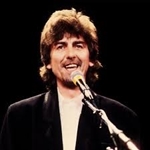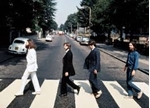- Register
- Log in to Tune-In
- Wishlist (0)
-
Shopping cart
(0)
You have no items in your shopping cart.
Beatles News

In 1972, The Beatles had been broken up for two years, but all four former members of the band were enjoying successful solo careers. George Harrison (All Things Must Pass) and John Lennon (Imagine) had already released platinum-selling albums; Ringo Starr’s would follow in ’73.
For his part, Paul McCartney tasted success as a solo artist right away with April 1970’s McCartney. After releasing Ram (1971) with his wife Linda, the couple formed Wings, which would would be Paul’s outlet for the rest of the ’70s.
Like the final Beatles releases, Wings albums went out on the Apple label, and Paul would occasionally use Abbey Road studios to record tracks. And that’s where he was in late ’72 while working on Red Rose Speedway.
Source: cheatsheet.com
details
For everyone who’s been waiting and wondering about the Beatles’ 50th anniversary of “Let it Be,” we have to let it be for now.
The actual anniversary of the album’s release is May 8th, and the Michael Lindsay-Hogg movie came out on May 13, 1970.
But I’m told the whole 50th anniversary celebration will occur in the fall, not this spring. There are two reasons.
One reason is that no work has been done yet on the mixing, remixing and so on of the original album, the original movie’s soundtrack, or the Peter Jackson documentary. The mixing sessions are set for this July. It shouldn’t take too long. At this point Giles Martin and his crew know exactly what they’re doing.
The other reason is that all these expensive packages will be aimed at a holiday release. They’re a waste of time in May for Apple Records and for retailers. If they come in October, they’ll be part of the Christmas shopping madness. It makes more sense all around.
Source: by Roger Friedman/showbiz411.com

The Duke of Sussex joined Jon Bon Jovi on a rainy London zebra crossing to recreate the Beatles’ Abbey Road album cover at the recording of a charity single.
In one of his final engagements before stepping back as a working royal, Harry attended a re-recording of Bon Jovi’s song Unbroken, performed with the Invictus Games Choir to raise money for the international multi-sport event for injured or sick military personnel.
At Abbey Road Studios, where the Beatles recorded in the 1960s, Harry joined the singer at the microphone in a video shared on the Sussexes’ Instagram account. “We’ve been gargling next door, so we’re ready to go,” Harry joked to a sound engineer.
Source: The Guardian
details
Boys
- Bill ("The Continuing Story of Bungalow Bill")
- Chuck ("When I'm Sixty-Four")
- Dave ("When I'm Sixty-Four")
- Dennis ("You Know My Name [Look Up the Number]")
- Desmond ("Ob-La-Di, Ob-La-Da")
- Duke ("Cry Baby Cry")
- George (Harrison)
- Harrison (George)
- John (Lennon)
- Jones ("Ob-La-Di, Ob-La-Da")
- Jude ("Hey Jude")
- Lane ("Penny Lane")
Source:
details

There are few figures more controversial in rock history than Yoko Ono. For decades, fans and critics have theorized about the extent of her influence on John Lennon and debated her role in the Beatles’ breakup. It should come as no surprise, then, that even Lennon and Ono’s first meeting is mired in uncertainty.
Born in Japan, Ono became interested in experimental art when she attended college in New York in the ’50s. By the time she met Lennon in the ’60s, she was on her second marriage, to American jazz musician Anthony Cox, which had produced a daughter, Kyoko Chan Cox, in 1963. According to Ono, the relationship between Cox and her had soured, although they remained married. She left the raising of little Kyoko to her husband so that she could focus on her avant-garde artwork. Ono’s involvement in the art community brought her to London in the mid-’60s
Source: ultimateclassicrock.com
details
A new memorial devoted to George Harrison is set to be built in Liverpool to mark the Beatles icon’s 77th birthday.
The project, announced by Liverpool City Council and the George Harrison Estate, will see a new memorial woodland being created in honour of the late star.
The George Harrison Woodland Walk will be located in the suburb of Allerton, close to where Harrison was born and spent his formative years.
Upon completion in 2021, the memorial woodland will feature a selection of artistic installations directly inspired by Harrison’s seminal lyrics and his life.
Source: Nick Reilly/nme.com
details
You can't rush a good thing. This phrase is certainly true when describing George Harrison composing his highly acclaimed song "Something." George had been known to take his good old sweet time when composing a song, maybe many months, something he would admit in interviews throughout his Beatles career. He also used to be quite self conscious about his compositions, not sure if they were good enough to be included among the Lennon / McCartney songs on a Beatles album. "I haven't got a clue what's commercial and what isn't," George stated to interviewer David Wigg in 1969. And this certainly was the case with "Something."
Source: beatlesebooks.com
details
Before John Lennon and Paul McCartney had a record deal or songwriting contract, they were like any other young musicians trying to make it. They would try out songs in all sorts of styles, and some later made it onto albums by The Beatles.
“Michelle,” which Paul workshopped for parties among John’s art-school set (circa ’58), found a spot on Rubber Soul (’65). Likewise, “When I’m Sixty-Four,” which Paul also wrote in the ’50s for someone like Frank Sinatra, ended up on Sgt. Pepper’s Lonely Hearts Club Band (’67).
But others didn’t make the leap from the early days to the Lennon-McCartney era (from ’62 on). “World Without Love” which became a huge hit for Peter and Gordon in ’64, was one such song. In that song’s case, John couldn’t listen to it without laughing.
Source: cheatsheet.com
details
This week marks what would have been George Harrison's 77th birthday. Back in February 1988, the Quiet Beatle marked the occasion with a bona fide hit record, "Got My Mind Set on You," which was soaring among the American radio airwaves at the time.
Harrison had first heard the song much earlier during his inaugural visit to the United States in September 1963 — some five months before the Beatles' bravura appearance on "The Ed Sullivan Show." As George later recalled, "I'd been to America before, being the experienced Beatle that I was. I went to New York and St. Louis in 1963, to look around, and to the countryside in Illinois, where my sister [Louise] was living at the time. I went to record stores. I bought Booker T and the MGs' first album, 'Green Onions,' and I bought some Bobby Bland, all kind of things."
Source: salon.com
details
On Feb. 23, 1965, John Lennon, Paul McCartney, George Harrison and Ringo Starr began filming the second Beatles movie. Originally named Eight Arms to Hold You -- an innocent but prophetic phrase that was definitely better than the working title Beatles 2 -- the title was eventually changed to Help! And that's exactly what the band needed around that time.
The four knew their fabness was waning. Beatlemania was taking its toll, making it impossible for them to escape the bubble of fame that surrounded them, leaving the quartet detached from the kind of everyday world that inspired the songs that helped blow up that bubble in the first place.
Lennon knew what he was doing when he wrote the title track. “I meant it, it’s real,” he said later. “It was just me singing ‘help’ and I meant it.” Separately, he told Playboy in 1980 that, at the time, he “was fat and depressed, and I was crying out for help.”
McCartney more recently concurred: “He didn't say, 'I'm now fat and I'm feeling miserable.' He said, 'When I was younger, so much younger than today.' In other words, he blustered his way through. We all felt the same way.” Still, “Help!&r details

The official and verified Instagram page of The Beatles icon John Lennon exposed special memorabilia of lithographic plates written by Lennon.
In the caption of the picture, It is stated that this exclusive plate was written by John in February 1969 as a part of the ‘Bag One’ collection. The stone was printed by Curwen Studio in London, and also it’s signed and dated.
Here is what John Lennon wrote onto the stone:
“THIS IS MY STORY, 1969⠀
Source: Berk Uykucuoglu/metalheadzone.com
details

Software entrepreneur and music producer Scott Freiman put together a little show for friends in his living room in Irvington, New York, back in 2009, listening to some Beatles music. He’d been a fan of their work since childhood and enjoyed analyzing what made it so unique.
Before he was finished, his friends — composers and producers — were suggesting he was on to something. They told him he ought to develop his ideas into presentations others could enjoy as well. His background was perfect: an undergrad degree from Yale in computer science and music, and a master’s from New York University in music composition. He’d been in the business full time since 2001, opening his own studio in 2005, writing film scores, editing movie sound and music, and selling out Carnegie Hall with a concert of original music for orchestra and children’s choir.
Source: Joe Stinnett/newsadvance.com
details
That December day in 1971 when John Lennon came to Ann Arbor was his own idea…he wasn’t invited, but took it upon himself to come and perform.
The reason? John had heard about the plight of John Sinclair. Sinclair was chairman of the Rainbow People’s Party of Ann Arbor and was serving an unjust ten years in Jackson State Prison for possession of two marijuana joints. The People’s Party did their best to bring attention to their cause by holding concerts, benefits, and rallies, and they even got a handful of celebrities involved, like actor Donald Sutherland, Jane Fonda, and others. After Yippie activist Jerry Rubin told Lennon about an upcoming December 10 rally for Sinclair, Lennon took the ball and ran. He wrote a song about Sinclair that can be found on his Sometime in New York City album.
The rally was to be held at UM’s Crisler Arena, and Lennon said he would donate his performance fee to the John Sinclair Freedom Fund.
Source: 99wfmk.com
details
James Taylor is one of the most iconic folk singers of the 1960s, which is saying a lot. Although the Beatles occasionally dabbled in folk music, they largely stayed in a separate musical lane from Taylor. However, that doesn’t mean he didn’t socially interact with the Beatles now and then.
In fact, Taylor auditioned for the Beatles. Later, Taylor had a front-row seat to the later years of the Beatles. Surprisingly, he admitted to being a bad influence on the group.
Rolling Stone reports Taylor was signed to the Beatles’ Apple Records in 1968. He was able to secure an audition for the label after his friend gave his demo tape to Apple’s head of A&R, Peter Asher. On a 2015 episode of Late Night with Seth Meyers, Taylor said scoring the audition was a great example of “being in the right place at the right time.”
Taylor was told he was going to audition for two Beatles an hour before the audition was going to happen. He recalled auditioning for Paul McCartney and George Harrison and being thoroughly intimidated by the experience, as most musicians would be. At the audition, he played “Something in the Way She Moves,” which was his favorite of the songs he details

Just days before his death, The Beatles founding member George Harrison wrote a letter to Austin Powers director Mike Myers expressing his admiration for his work.
The letter, which would go on record as the final note ever written by ‘The Quiet Beatle’, was never mailed out to Myers but was subsequently passed on to the filmmaker who, coincidentally, ended up receiving on the day Harrison passed away.
Myers, whose father was born in Liverpool, once said: “You don’t know what The Beatles were in my house,” in an interview with WENN news. “They were everything. Liverpool was poorish and it was rough and all of a sudden it was cool to come from this town, so my parents were eternally grateful.”
Later, in a wide-ranging interview with GQ, Myers was asked: ‘Is it really true that the very last letter George Harrison wrote in his life was to you?’ and, remarkably, it was: “Yes. That’s mind-blowing, dude, for the son of a Liverpudlian, a person who worships the Beatles,” Myers replied.
Source: faroutmagazine.co.uk
